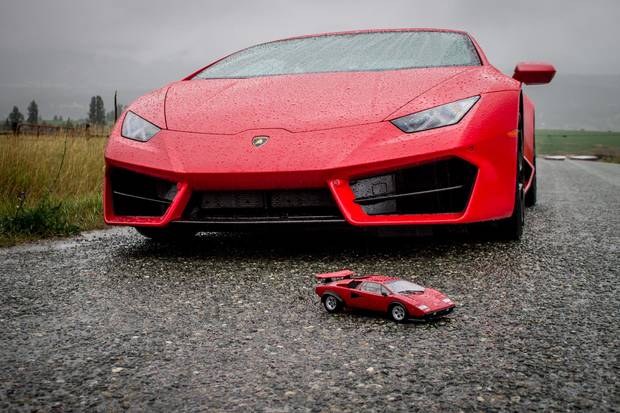Perched high in one of the western halls of the recent Tokyo Motor Show, toy maker Tomica's display was a brightly lit circus of flashing lights, whizzing cars and giant fighting robots.
A phonetic contraction of Tomy Car, Tomica is Japan's answer to Hot Wheels or Matchbox. It's been making diecast cars since 1970.
In one display case filled with slightly higher-quality models, a one-64th scale Lamborghini Countach gleamed under the lights. No explanation was given for the three Maple Leaf emblems it wears: one on each headlight and one on the back. Why on Earth is a Japanese toy maker selling a tiny Italian supercar icon emblazoned with the Canadian flag?
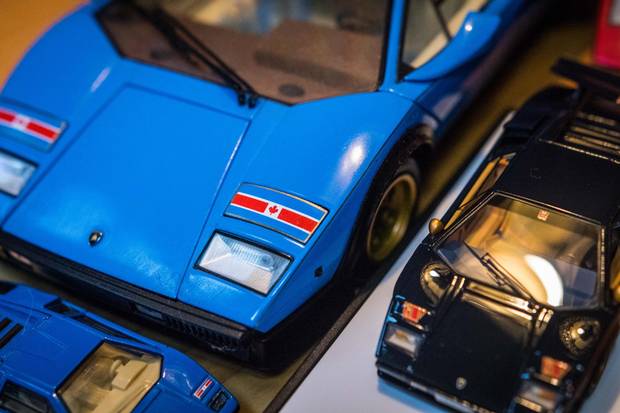
A closeup of the Maple Leaf details carried by the Wolf Countachs.
BRENDAN MCALEER/THE GLOBE AND MAIL
On the 37th floor of the ANA InterContinental Tokyo hotel, blades flashed as a traditional teppanyaki chef sears food on the hot steel surface. To my right, Shinjiro and Yuka Fukuda conversed through an interpreter, discussing their plans to open a top-level restoration company just south of the city. The Fukudas have a unique collection of cars, ranging from a Ferrari 330 recently purchased in unrestored condition, to a 1933 Alvis 3-Litre Special they use in all-weather classic-car rallying. They also own the final Wolf prototype Countach, recently restored to its former glory.
These days, only vintage-racing enthusiasts will immediately recognize the name of Walter Wolf. A self-made millionaire who built a fortune in oil exploration and trading in the 1970s, Wolf pursued all manner of daring exploits – a pilot, diver and rally driver, and when the value of his company grew to the point that the board forbade him from the dangerous pursuit of competitive driving, he went out and bought his own Formula One team.
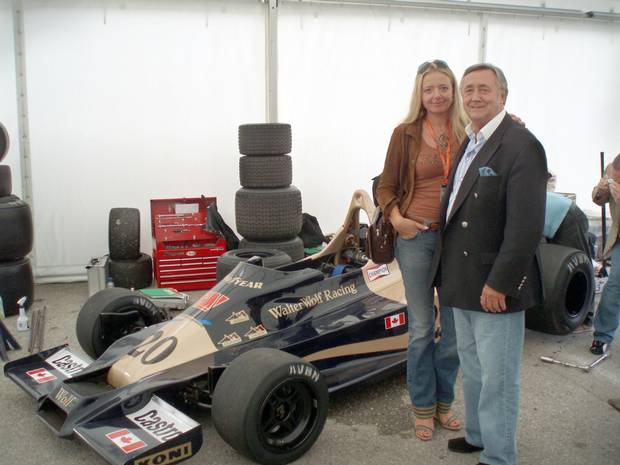
Walter Wolf and his wife, Edna Kernc, in front of one of his team’s Formula One cars, now competing in vintage racing.
handout
Attend nearly any vintage-racing event and you're bound to see one of his cars. There are Wolf Formula One cars at the Monterey Historics, lapping before the main F1 race at Circuit Gilles Villeneuve and in the paddocks at the Goodwood Festival of Speed. The Wolf Dallara WD1 driven in Can-Am racing has just been restored by an enthusiast in New Zealand.
In the wild days of James Hunt and Niki Lauda, Wolf's Formula One racing team had its highs and lows. Campaigning a single car with future F1 champion Jody Scheckter at the wheel, the Wolf team beat the Ferraris at Monaco, won the Argentine and Canadian Grand Prixs, but ultimately finished fourth over all.
If you think Formula One is a circus now, just imagine it in the anything-goes 1970s. Excess was the rule, and no auto maker does excess like Lamborghini.
Wolf began with the curvaceous Miura, bought a couple of the LM002 off-roaders (which he disliked) and eventually ended up with a white LP400 Countach. An absolutely staggering design, the wedge-shaped LP400 is striking today in a way few exotics can match. Walter thought it was a bit slow.
In the 1970s, Lamborghini was struggling financially and Wolf's vast wealth buoyed the company. Officially a shareholder, considerable funds flowed under the table, leading to the creation of three prototype cars. The first Countach to wear a wing? Wolf's. The first car to have 335-mm-series Pirellis fitted out back? Another Wolf prototype.
The four cars were white, red, light blue and finally dark blue and gold. Starting with the red car, whose flared bodywork presaged the LP5000 that graced so many bedroom-wall posters, all the cars wore the Canadian flag proudly. Born in Austria in 1939 to a German bricklayer and his Slovenian wife, Walter immigrated to Canada in the 1950s from a port in Germany. He felt a deep love for the opportunity provided him by his adopted country.
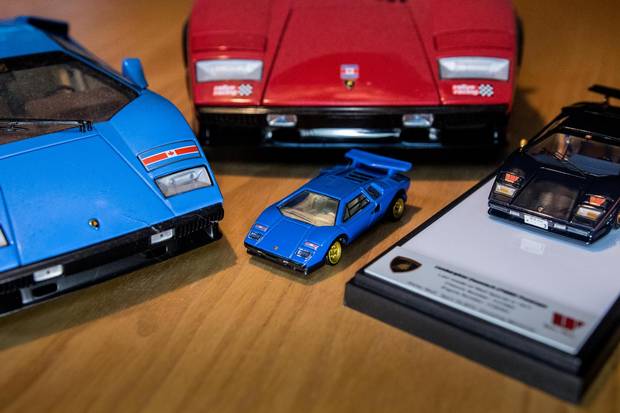
The red car was the first proper prototype, then the light blue. The dark blue car was the last and fiercest, with a hand-built V-12 generating nearly 500 horsepower.
BRENDAN MCALEER/THE GLOBE AND MAIL
"I am not a collector," he said in an interview at his home in B.C.'s Thompson River Valley. "I am a pilot. I did not even keep any pictures of the old days."
Walter went through supercars the way some people go through smartphones. His last Countach was perhaps the finest combination of outlandish Lamborghini styling and genuine performance ever seen. Featuring a hand-built V-12 engine displacing 5.0 litres, it made nearly 500 horsepower at a time when many European road cars would struggle to hit much over 100 kilometres an hour. It had an ultraquick 7:1 steering rack, huge F1-sourced eight-piston brakes and a bespoke suspension layout.
It was, in short, an absolute monster. However, by 1979, Wolf was already sniffing around something even more ridiculous: a near-800 hp street version of Porsche's Le Mans-winning 935. He had one built by the Kremer brothers, installed Alberta plates and regularly hit above 300 km/h on the unrestricted autobahn in West Germany.
His prototype Countachs passed into the possession of collectors. With the Japanese economic bubble approaching its fullest, the best of the raging bulls ended up in the land of the rising sun. School-aged Japanese supercar fans could see their heroes at shows. You bought a ticket to enter and got to walk around gawping at wings and intakes and outrageous bodywork.
It was the kind of experience you'd carry for a lifetime. The Fukudas completed an extensive restoration of the final Wolf prototype a couple of years ago and plan on bringing it to Italy for the Villa d'Este concours sometime in the future. At present, it is tucked away carefully next to a rare Ferrari F40 LM and only occasionally prowls the streets of Tokyo.
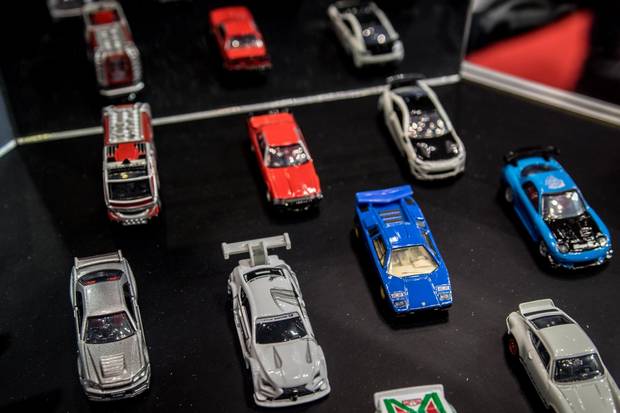
Miniature Wolf prototype Countachs on display at the Tokyo Motor Show.
BRENDAN MCALEER/THE GLOBE AND MAIL
If you'd like to own your own piece of the Wolf Lamborghini story, you don't have to buy a ticket to Tokyo. Larger models available from diecast makers Kyosho and AutoArt are readily available from online retailers.
Alternatively, a Tomica Countach is about $20, including shipping from either Japan or Hong Kong. Granted, that'd buy you a little squadron of Hot Wheels, but it's a small price to pay to put a miniature Canadian legend on your desk.
Shopping for a new car? Check out the new Globe Drive Build and Price Tool to see the latest discounts, rebates and rates on new cars, trucks and SUVs. Click here to get your price.
